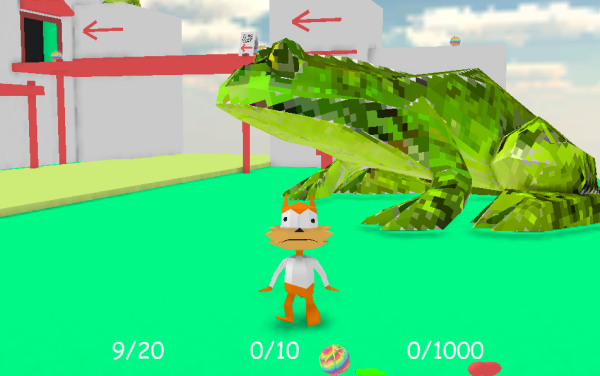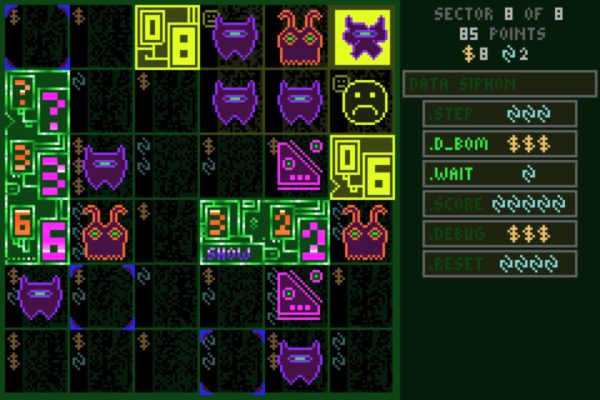My Top 10 Games of 2013
By Joel Jordon
10. Bubsy 3D

Arcane Kids are my favorite new developer.
9. Gone Home

Its writing and the contents of its story may not reach literary heights, but still Gone Home is subversive beginning to end. Its most enduring achievement may be that it convinces its players to expand their idea of what choice in games is, opening up rarely explored realms of subtlety.

Experiment 12 makes a strong case that a future with more albums of small games exploring ideas that play off of each other would be a brighter future for videogames.
7. Towerfall

I had fun playing this.
(Alternative sentence for this entry: I would probably fill this whole list with new local multiplayer games if only I could get people together to play them more often.)
6. Animal Crossing: New Leaf

Animal Crossing calls attention to how you spend your time with it. Because it’s tied to the real-world clock, you have to come back to it periodically for short amounts of time, which turns it into a ritualistic experience like VESPER.5. Because throughout this ritual the play is so simple and nothing you do really matters, it makes you, like several other games on this list, think about choice. It leaves you to gradually decide on your own when to shut down your compulsions and engage only in what you want to, reclaiming time for yourself.
5. Proteus

In Gone Home choice manifests mainly as what pieces of plot you decide to draw connections between in your mind; in Proteus you simply choose what to move toward, look at, and listen to. Everything, aesthetics included, has been abstracted here (though, in my opinion, not quite as thoroughly as in Dyad, the last game David Kanaga did music for). This lets you feel each small, quiet moment more intently.

This was a bit of a curveball for me. I played it for the first time yesterday, and it’s the only videogame that’s ever almost made me cry (which, as David Jaffe would surely want us to believe, is the sign that videogames have become art). This probably means it should be #1 not only on this list but also on my list of the best videogames of all time, but instead it’s #4 here, ranked below a Metal Gear game. Don’t worry too much about it.
Blues for Mittavinda is also the only videogame I know of that’s inspired by the literary work of David Foster Wallace (particularly his 2005 commencement address, This is Water), and it has a stunning realization of his project of learning how to pay attention and bring awareness to the things right in front of you in order to grapple with the world. It does this through a dialogue between player and game that is gaspingly intimate and powerful.
3. Metal Gear Rising: Revengeance

I’m going to use this as a launching point for a future post about what I’m calling “triple-A aesthetics,” so bear with the lack of specific details and examples here because I’ll be putting those together later: Regardless of whether this is a good thing, the history of games is now the history of videogames, these inelegant, strange, and often even monstrous forms that took shape over the past fifty years. A “formalist” account of games that dismisses the forms of triple-A videogames as not purely “game-like”—accusing them of not being based exclusively enough on systems or, more commonly, of incorporating too much from other media, such as film—ignores this history that has made games into something other than what they once were. Ian Bogost writes that arguing against new developments from the perspective that they are aberrant relative to what came before is fallacious as well as outright harmful to creativity. I want to suggest that prevailing forms can be challenged not just by inventing new forms but also by harnessing the recent history of triple-A games in order to salvage their forms and apply them to new ends. In fact, I think the latter can enable more radically subversive political aesthetics that can directly interface with dominant cultures and contexts.
Metal Gear may provide some examples of how to take triple-A aesthetics and use them to new ends, even if throughout its history it has also at the same time used triple-A aesthetics uncritically. Rising is sometimes only a silly parody, but its politics get deeply serious, and its subversive use of triple-A aesthetics is central to the effectiveness of its rhetoric. We can go further by taking what Rising has set out and applying it to still newer ends, continually challenging what is with an awareness of what has been.
2. Super Mario 3D World

You can trace the subtle refinements Nintendo has been making over the course of years if you zoom in closely enough on their designs—my favorite example is all of the tiny beautiful evolutions of Super Mario 64 you can see in Pikmin. In the years of the Wii their project of accessibility may have been poorly executed more often than not, resulting in hollowed-out games with thin design, but now they seem to have settled into designs that are actually as close as possible to being enjoyable to anyone. Super Mario 3D World may not be like the unusual experiments in design Nintendo put together in the Gamecube era, but it is joy distilled into moments that pass in flashes, each hardly lasting longer than the time it takes for Mario to rise and fall in his jump, so transient it can be hard to recognize the decades of effort that went into making all of it possible.
1. 868-HACK

The impeccable design of 868-HACK is just about unmatched by anything else. I’d also like to take this opportunity to say Michael Brough’s Corrypt, a game that snuck out at the end of 2012, might be, now that I’ve had a year to reflect on it, the most accomplished videogame I’ve ever played—you should play it if you missed it.
Honorable Mentions:
Pikmin 3
Killer is Dead
Inputting
MirrorMoon
Papers, Please
Luigi’s Mansion: Dark Moon
Post-Future Vagabond
Crystal Warrior Ke$ha
Also: I haven’t played Kentucky Route Zero yet.
And: If Spelunky still counted this year, it would be #1.